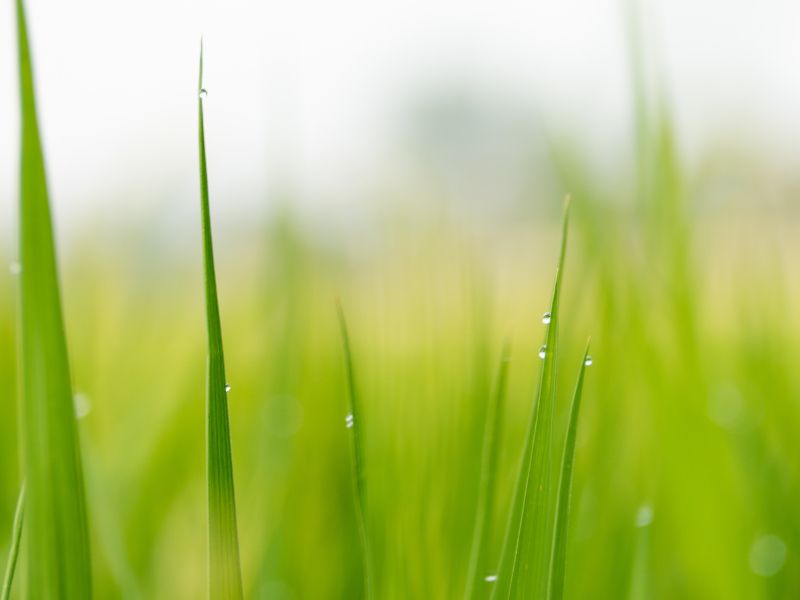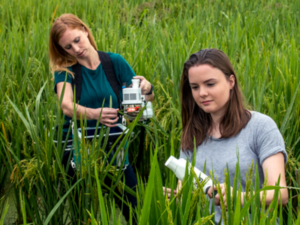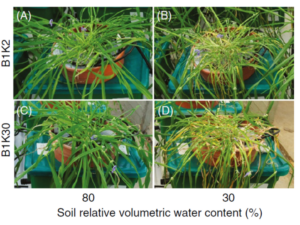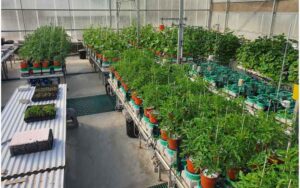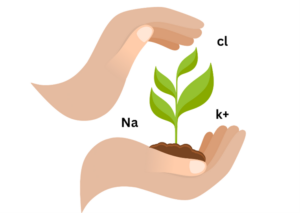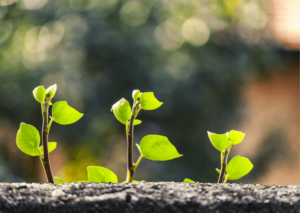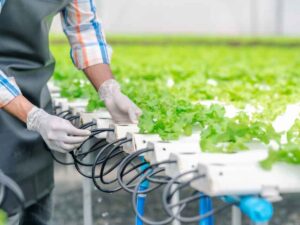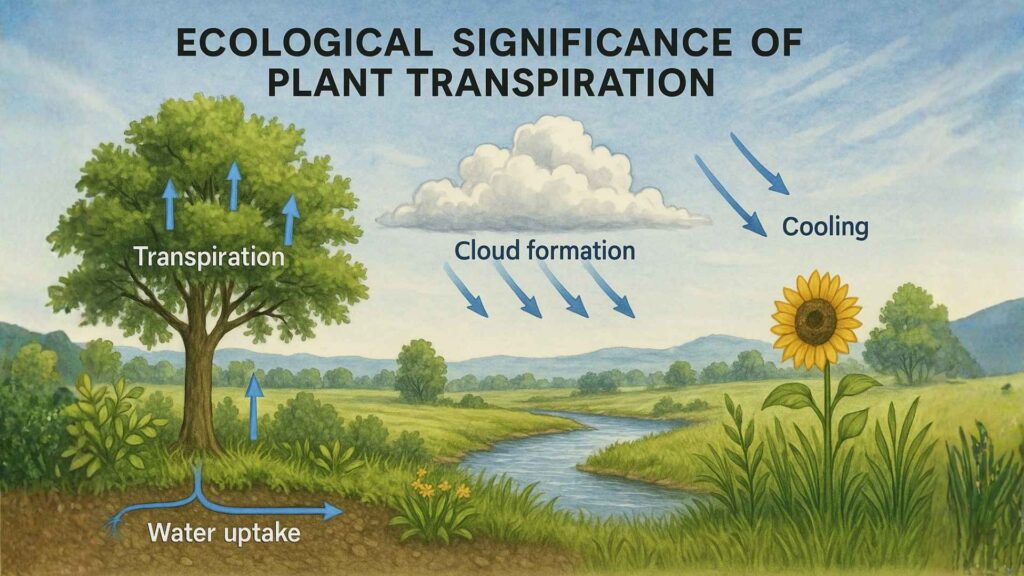The provided article describes the process of plant transpiration, a critical biological phenomenon where plants absorb water from the soil and release it as vapor through stomata. It explains the mechanisms driving this process, including water uptake by roots, transport through xylem, and the cohesion-tension theory.
The article also explores how transpiration is influenced by environmental factors and its significance in plant cooling and climate regulation. Finally, it discusses the close relationship between transpiration and photosynthesis, highlighting the role of stomata in regulating gas exchange and the challenges plants face in balancing water conservation with the need for carbon dioxide uptake. It also touches on how this understanding is applied in agriculture, particularly in irrigation management, drought resilience, and precision agriculture.
What Is the Mechanism of Plant Transpiration?
The mechanism of plant transpiration is a fascinating process that involves the movement of water from the soil to the atmosphere through various parts of the plant. This intricate mechanism, driven by several key factors, relies on specialized plant structures and tissues. Let’s explore it in more detail:
- Root Water Uptake: The process begins with water uptake by the roots. Plant roots absorb water along with dissolved minerals and nutrients through tiny root hairs, which significantly increase the surface area for water absorption. This uptake is facilitated by osmosis, as the concentration of water in the soil is higher than that inside the root cells.
- Water Transport Through Xylem: Once water is taken up by the roots, it is transported upward through the plant by the xylem, a specialized vascular tissue. The xylem consists of hollow, elongated cells that form continuous tubes from the roots to the leaves. These cells are strengthened by lignin, which provides structural support and prevents the collapse of the water-conducting vessels.
- Cohesion-Tension Theory: This is a key principle that explains the movement of water through the xylem. According to this theory, water molecules in the xylem exhibit cohesive properties, meaning they stick together. As water is lost from the leaves during transpiration, it creates a negative pressure or water stress in the xylem, pulling water upward from the roots. The cohesive forces between water molecules maintain a continuous column of water from the roots to the leaves. Adhesion to xylem vessel walls also helps counteract the force of gravity and prevents the water column from breaking under tension.

What Is the Role of Stomata in Regulating Transpiration?
Stomata’s role in gas exchange and water conservation is pivotal. Guard cells contain sensors that measure environmental elements like light, humidity, temperature, and CO₂ levels. These sensors help the stomata decide when to open to take in CO₂ for photosynthesis and when to close to protect the plant from losing too much water.
Stomata are microscopic pores on the surface of leaves and stems. These specialized structures play a crucial role in regulating the rate of transpiration. Stomata consist of two specialized guard cells that can open and close the pore. The opening and closing of stomata are controlled by various environmental factors, such as light intensity, temperature, humidity, and carbon dioxide levels.
How Do Environmental Conditions Affect Transpiration?
The rate of transpiration is greatly influenced by environmental conditions. For example, high temperatures increase the rate of water evaporation from the leaves, leading to more significant water loss through transpiration. Wind can enhance transpiration by removing the water-saturated air surrounding the leaves, promoting a higher rate of water vapor diffusion. Conversely, high humidity levels reduce transpiration rates, as the surrounding air already contains substantial moisture.
Transpiration also has a cooling effect. As water is released through stomata, it absorbs heat energy from the plant and leaf surfaces, providing a cooling effect similar to perspiration in animals. This process, known as evaporative cooling, helps plants regulate their temperature, especially during hot and sunny days.
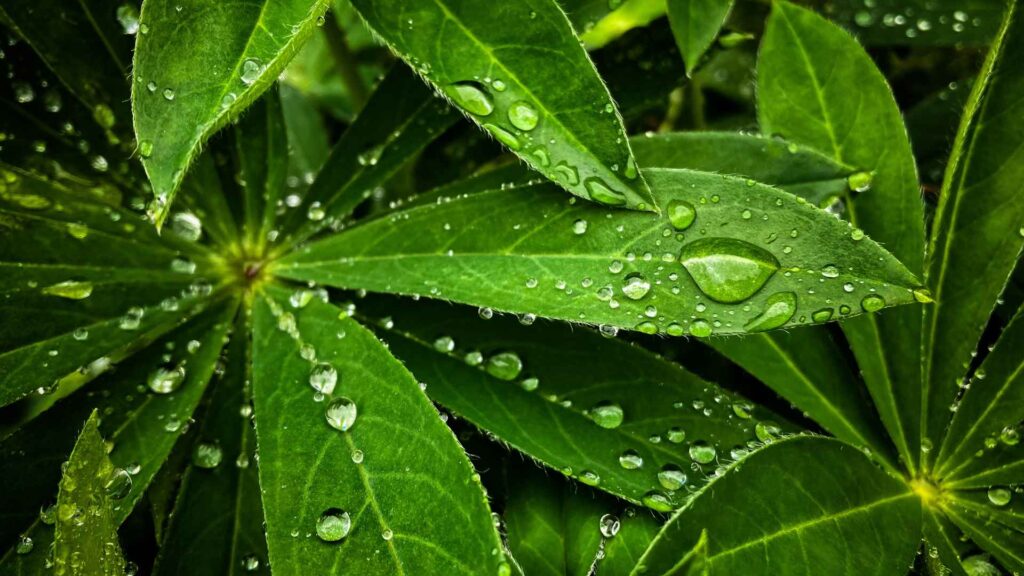
How Is Transpiration Connected to Photosynthesis?
Transpiration and photosynthesis are intricately connected. Photosynthesis is the process through which plants use sunlight, carbon dioxide, and water to produce glucose and oxygen. Water is a critical component, serving as the source of electrons needed to convert CO₂ and light energy into glucose. During transpiration, water is transported from the roots to the leaves, reaching the mesophyll cells where photosynthesis predominantly occurs.
The stomata play a crucial role in both processes. They open to allow CO₂ to enter for photosynthesis, but this also causes water vapor to escape. This water loss, known as transpiration pull, helps maintain the flow of water from the roots to the leaves, sustaining the cohesion-tension mechanism.
Plants must strike a delicate balance: they need to open their stomata for CO₂ uptake, but they must also control this opening to minimize water loss, especially in hot and dry conditions, to prevent dehydration. Environmental factors like light intensity, temperature, humidity, and wind speed directly influence both processes.
How Are Mesophyll Cells Involved?
Mesophyll cells are a critical component of plant leaves, located between the upper and lower epidermis. These cells are rich in chloroplasts, which contain chlorophyll, the pigment essential for photosynthesis. The high concentration of chloroplasts allows them to efficiently capture sunlight.
Mesophyll cells also contribute to water regulation. As water is drawn up through the xylem, it is delivered to the mesophyll cells. From here, water moves into the air spaces within the leaf and eventually exits through the stomata as water vapor. The process of evaporative cooling from the surface of these cells helps prevent the leaf from overheating under intense sunlight.
What Is the Ecological Significance of Plant Transpiration?
Ecology is the study of how organisms interact with their environment. Within this field, plant transpiration offers insights into how plants respond to environmental conditions and how their interactions shape ecosystems. Here’s how transpiration is deeply connected to ecology:
- Microclimate Formation: Transpiring plants release water vapor, increasing local humidity and affecting temperature and air movement. This creates microclimates around plants, which can influence the physiology and behavior of other organisms.
- Species Interactions: Heavy transpiration by certain plants can affect water availability for neighboring plants or soil microorganisms, influencing species composition and competition within a community.
- Plant-Soil-Atmosphere Continuum: Transpiration is a key part of the plant-soil-atmosphere continuum, a pathway through which water moves from the soil, through plants, and into the atmosphere. This continuum regulates the movement of water, nutrients, and energy within ecosystems.
- Water and Nutrient Cycling: Transpiration facilitates the movement of water and nutrients from the soil to the leaves, which is a vital aspect of nutrient cycling within ecosystems.
How Is Transpiration Used in Agriculture and Crop Science?
In agriculture, understanding plant transpiration is crucial for efficient irrigation management. By deciphering the transpiration rates of different crops, agricultural scientists can develop irrigation strategies that match the plants’ water requirements, ensuring optimal growth and yield while conserving water.
The concept of water-use efficiency (WUE) is central here, with crops that have a high WUE being preferred, especially in water-scarce regions. Genetic studies help in identifying traits that improve WUE and drought tolerance, aiding in the development of resilient crop varieties.
How Can Plant Transpiration Be Measured?
Measuring plant transpiration is essential for research in botany, agriculture, and ecology. Scientists use several methods, each suited for different scales and purposes, from a single leaf to an entire field.
- Gravimetric Method (Weighing): This is one of the most direct ways to measure whole-plant transpiration. A potted plant is placed on a sensitive scale (a lysimeter), and its weight is monitored over time. The loss in weight is almost entirely due to the water that has transpired from the leaves and evaporated from the soil. Modern systems, like the PlantArray platform, automate this process, allowing for high-throughput screening of many plants at once under controlled conditions.
- Potometer: A potometer is a simple device used in laboratory settings to estimate the transpiration rate. It measures the rate of water uptake by a cut shoot. While it doesn’t measure transpiration directly, it provides a very close approximation, as over 95% of the water absorbed by the roots is lost through transpiration.
- Gas Exchange Analysis (Porometry): This technique uses a device called a porometer or an infrared gas analyzer (IRGA) to measure the rate of gas exchange from a leaf. By clamping a small chamber onto a leaf, the instrument can measure the amount of water vapor leaving the stomata, providing a precise measurement of the transpiration rate per unit of leaf area.
- Sap Flow Sensors: To measure transpiration in larger plants and trees in their natural environment, scientists use sap flow sensors. These devices are attached to the stem or trunk and use heat as a tracer to measure the velocity of sap moving through the xylem. This sap flow rate is directly correlated with the whole-plant transpiration rate.
Summary of Plant Transpiration and Related Concepts
Concept | Description | Related Fields |
|---|---|---|
Transpiration | Water absorbed by plants is released as vapor through stomata. | Biology, Ecology, Agriculture |
Cohesion-Tension Theory | Explains how water moves up the plant, driven by a negative pressure pull from transpiration. | Plant Physiology |
Stomata | Pores on leaves regulated by guard cells; control gas exchange and water loss. | Botany, Plant Physiology |
Photosynthesis | Process where plants use sunlight, , and water to produce energy (glucose) and oxygen. | Plant Biology, Chemistry |
Evaporative Cooling | The cooling effect on plants as water evaporates from leaves, similar to animal perspiration. | Thermodynamics, Plant Physiology |
Water-Use Efficiency (WUE) | The ratio of biomass produced to the amount of water used by a plant. | Agriculture, Agronomy |
Conclusion
From the microscopic action of stomata to its large-scale impact on climate, plant transpiration is a fundamental process that sustains plant life and shapes our world. Understanding its mechanisms allows us to develop more resilient crops, manage our water resources more effectively, and appreciate the complex interplay between plants and their environment. As challenges like climate change and water scarcity grow, the insights gained from studying transpiration, aided by innovative technologies discussed on the Plant-DiTech site, will become increasingly vital for ensuring a sustainable future.
Frequently Asked Questions
Why Is Plant Transpiration So Important?
Plant transpiration is a crucial biological process where plants absorb water from the soil, transport it, and release it into the atmosphere as water vapor through small pores called stomata. This natural phenomenon is vital for plant survival, nutrient uptake, and maintaining overall environmental balance.
How Do Plants Manage Drought Stress?
During drought conditions, plants often close their stomata to reduce water loss through transpiration. This conserves water, but it also limits CO₂ uptake for photosynthesis.
The study of plant responses to drought stress has been revolutionized by advanced technologies. The PlantArray system, for example, is a high-capacity physiological phenotyping platform that precisely measures traits like transpiration, biomass vigor, and stomatal conductance. These measurements help researchers understand how plants adapt to drought and identify species with higher resilience.
References:
- Taiz, L., & Zeiger, E. (2010). Plant Physiology (5th ed.). Sinauer Associates.
- Kramer, P. J., & Boyer, J. S. (1995). Water Relations of Plants and Soils. Academic Press.
Nobel, P. S. (2009). Physicochemical and Environmental Plant Physiology (4th ed.). Academic Press.

